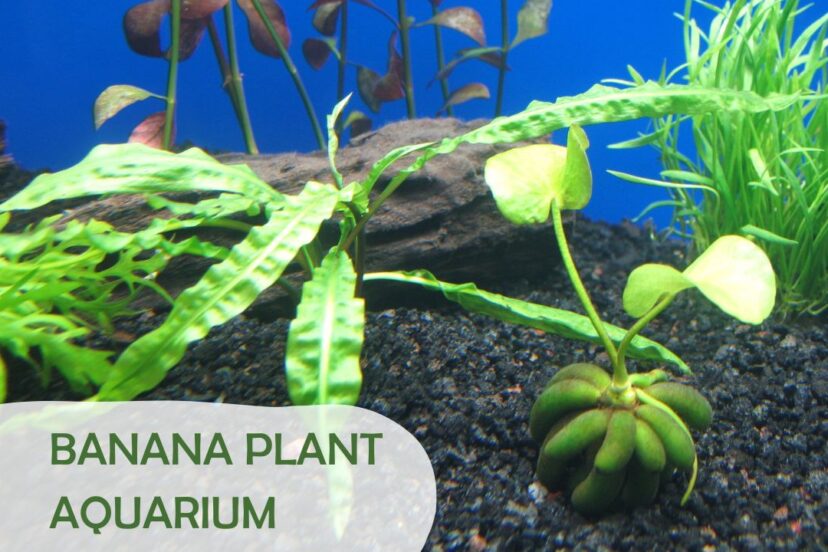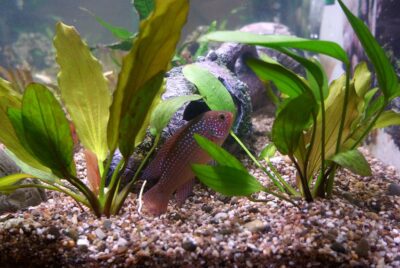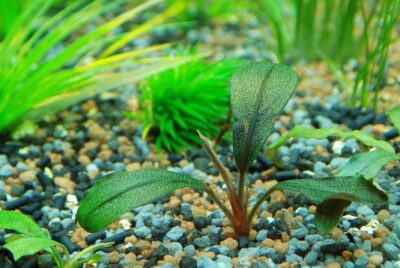Banana Plant Aquarium
As an avid fish enthusiast and advisor, I am thrilled to introduce you to the captivating world of banana plant aquariums. If you’re looking to create a visually stunning and thriving aquatic ecosystem, incorporating banana plants into your setup is an excellent choice. In this article, I will provide helpful suggestions and reasons for why a banana plant aquarium can be a delightful addition to your home. So let’s dive in!
Introduction
When it comes to aquariums, the possibilities are endless. Each setup allows you to create a miniature ecosystem that mimics nature’s beauty. The concept of a banana plant aquarium revolves around incorporating the versatile and visually striking banana plant (Nymphoides aquatica) into your tank. With its luscious green leaves and vibrant yellow flowers, the banana plant adds a touch of natural elegance to any aquarium.
Why Choose a Banana Plant Aquarium?
- Enhancing Aesthetics: The banana plant’s unique appearance instantly elevates the visual appeal of your aquarium. Its broad, ovate leaves and delicate flowers create a serene and captivating underwater landscape.”Provide moderate to high-intensity lighting using LED or fluorescent lights
- Providing Natural Habitat: Banana plants offer a natural hiding place and shade for fish, promoting their well-being and reducing stress levels. They also serve as spawning sites for certain fish species.
- Oxygenation and Filtration: Banana plants play a significant role in oxygenating the water, aiding in the removal of harmful substances and contributing to the overall health of your aquatic inhabitants.
- Easy Maintenance: Banana plants are relatively low-maintenance, making them an excellent choice for beginners and experienced fishkeepers alike. They are hardy and adaptable, requiring minimal effort to thrive.
Setting Up a Banana Plant Aquarium
Choosing the Right Tank – Banana Plant Aquarium
To create a successful banana plant aquarium, start by selecting the right tank. Consider the following factors:
- Size: Opt for a tank size appropriate for the number and size of fish you plan to keep. A larger tank provides more space for the banana plants to grow and flourish.
- Shape: Choose a tank shape that suits your available space and personal preference. Rectangular or square tanks are commonly used for banana plant aquariums.
- Materials: Glass tanks are recommended for their clarity and durability. Avoid using plastic tanks as they may scratch easily and hinder visibility.
Creating the Ideal Environment – Banana Plant Aquarium
For a thriving banana plant aquarium, it’s crucial to establish the ideal environment:
- Substrate: Use a nutrient-rich substrate to support the growth of the banana plants. A mixture of aquarium soil and gravel works well, providing essential nutrients and anchoring the plants.
- Filtration: Install a reliable filtration system to maintain water quality. A combination of mechanical, chemical, and biological filtration ensures a healthy and balanced ecosystem.
- Heating and Thermoregulation: Research the temperature requirements of your chosen fish species and ensure the aquarium heater maintains a stable and suitable temperature range.
- Water Circulation: Adequate water movement helps distribute nutrients and oxygen throughout the aquarium. Consider installing a circulation pump or using strategically placed air stones.
Selecting Suitable Fish and Invertebrates
When stocking your banana plant aquarium, it’s essential to choose compatible fish and invertebrates:
- Community Fish: Peaceful and community-oriented fish species like tetras, guppies, and rasboras coexist harmoniously with banana plants.
- Bottom Dwellers: Catfish, loaches, and shrimp species make excellent additions to the aquarium, contributing to the overall ecosystem balance.
- Avoid Digging Fish: Some fish species have a tendency to dig, which can uproot the banana plants. Avoid including such species in your aquarium to preserve the plant’s integrity.
The Beauty of Banana Plants
Banana plants possess a unique charm that enhances the overall aesthetic of your aquarium. Their eye-catching features make them a focal point of admiration. The broad, slightly undulating leaves provide shade and create a natural and calming environment for your fish.
Proper Lighting and Water Parameters
To ensure optimal growth and development of your banana plants, pay attention to lighting and water parameters:
- Lighting: Provide moderate to high-intensity lighting using LED or fluorescent lights. Aim for a lighting duration of 8-10 hours per day to mimic natural sunlight.
- Water Parameters: Banana plants prefer slightly acidic to neutral water with a pH range of 6.5-7.5. Maintain water hardness between 3-10 dKH for optimal growth.
Maintaining Water Quality – Banana Plant Aquarium
Maintaining water quality is crucial for the overall health and vitality of your Banana Plant Aquarium. By implementing proper maintenance routines, you can ensure a thriving aquatic environment for your fish and plants. Here are some detailed guidelines for maintaining water quality in your aquarium:
- Regular Water Changes: Perform weekly partial water changes (10-20%) to remove toxins and replenish essential minerals.
- Monitor Parameters: Regularly test pH, ammonia, nitrite, and nitrate levels to ensure they are within the appropriate range for your aquarium.
- Filtration System: Install a reliable filtration system that provides mechanical, chemical, and biological filtration to remove debris and maintain water clarity.
- Proper Circulation: Ensure adequate water circulation to distribute oxygen and nutrients throughout the aquarium.
- Substrate Maintenance: Vacuum the substrate during water changes to remove waste and prevent nutrient buildup.
- Algae Control: Maintain a balance of lighting, nutrient levels, and water circulation to prevent excessive algae growth. Consider introducing algae-eating fish or invertebrates.
- Avoid Overfeeding: Feed your fish in moderation and remove any uneaten food to prevent water pollution.
- Maintenance Schedule: Establish a regular maintenance routine for water changes, filter cleaning, and testing parameters.
By following these summarized guidelines, you can maintain optimal water quality in your Banana Plant Aquarium, promoting the health and well-being of your fish and plants.
Feeding and Nutrition – Banana Plant Aquarium
Feeding and nutrition play a crucial role in the overall health and growth of your Banana Plant Aquarium. Providing a balanced and appropriate diet is essential for both the banana plants and the fish inhabiting the tank. Here are some detailed guidelines for feeding and nutrition:
- Fish Diet: Research the dietary needs of your fish species and select high-quality commercial fish food that meets their nutritional requirements. Choose a variety of flakes, pellets, or granules to offer a diverse diet.
- Supplement with Live or Frozen Food: Supplement the fish’s diet with live or frozen food such as brine shrimp, bloodworms, or daphnia. These foods provide essential nutrients and promote natural feeding behaviors.
- Vegetable-Based Foods: Incorporate vegetable-based foods into the diet of herbivorous or omnivorous fish species. Blanched spinach, lettuce, or algae wafers can be offered as a source of fiber and additional nutrients.
- Feed in Moderation: Avoid overfeeding, as it can lead to water pollution and health issues for the fish. Feed small portions that can be consumed within a few minutes, and remove any uneaten food to maintain water quality.
- Feeding Frequency: Determine the appropriate feeding frequency based on the needs of your fish species. Most fish do well with two to three small feedings per day. Adjust the feeding schedule as needed.
By following these detailed guidelines for feeding and nutrition in your Banana Plant Aquarium, you can ensure the well-being and vitality of both your fish and plants. Providing a varied and balanced diet, avoiding overfeeding, supplementing with live or frozen food, and observing feeding behavior are essential practices to support a healthy and thriving aquatic ecosystem.
Regular Maintenance
Regular maintenance is a vital aspect of ensuring the long-term health and beauty of your Banana Plant Aquarium. By implementing routine care practices, you can create a thriving aquatic ecosystem that will captivate both you and your fish. Here are some detailed guidelines for regular maintenance:
- Pruning: Trim yellow or damaged leaves from the banana plant to maintain its aesthetics and encourage new growth.
- Plant Propagation: Separate side shoots or runners from the parent plant and replant them in the substrate to propagate new plants.
- Cleaning: Remove debris and uneaten food from the aquarium using a fish net or gravel vacuum during water changes.
- Water Changes: Perform regular partial water changes (10-20% weekly) to remove toxins and replenish essential minerals.
- Water Parameters: Monitor and adjust pH, ammonia, nitrite, and nitrate levels to maintain a stable and healthy environment.
- Algae Control: Maintain a balance between lighting, nutrient levels, and water circulation to control algae growth. Consider introducing algae-eating fish or invertebrates.
- Equipment Maintenance: Clean the filter media, inspect and maintain equipment such as heaters and air pumps regularly.
By following these maintenance practices, you can ensure the long-term health and beauty of your Banana Plant Aquarium.
Common Challenges
While banana plant aquariums are relatively easy to maintain, you may encounter a few challenges:
- Algae Growth: If algae growth becomes excessive, reassess lighting duration, nutrient levels, and water circulation. Consider introducing algae-eating fish or invertebrates as natural control measures.
- Plant Decay: If banana plant leaves show signs of decay, inspect water parameters, lighting conditions, and nutrient deficiencies. Adjust as necessary to promote healthy growth.
Troubleshooting Tips
Should you face any issues with your banana plant aquarium, consider the following troubleshooting tips:
- Yellowing Leaves: Yellowing leaves may indicate nutrient deficiencies or lighting problems. Adjust lighting levels and supplement with appropriate fertilizers to address the issue.
- Wilting or Uprooting: If your banana plant shows signs of wilting or uprooting, check the substrate’s stability and consider using plant weights to anchor the roots.
Conclusion
In conclusion, a banana plant aquarium adds a touch of natural elegance to your fishkeeping world. With its striking appearance and numerous benefits, including enhanced aesthetics, a natural habitat for fish, and ease of maintenance, the banana plant is a fantastic choice for both beginners and experienced aquarists. By following the provided guidelines for setting up and maintaining your banana plant aquarium, you can create a stunning underwater ecosystem that will captivate both you and your fish.
FAQS
Q. Can banana plants grow in low-light conditions?
A. Yes, banana plants are adaptable and can grow in moderate to low-light conditions. However, they thrive best with moderate to high-intensity lighting.
Q. How often should I fertilize my banana plants?
A. It is recommended to fertilize banana plants once or twice a month using liquid fertilizers or root tabs. Follow the manufacturer’s instructions for dosage.
Q. Can I keep aggressive fish species with banana plants?
A. It is not advisable to keep aggressive fish species with banana plants, as they may uproot or damage the plants. Stick to peaceful community fish for a harmonious setup.
Q. Do banana plants require CO2 supplementation?
A. Banana plants can grow well without CO2 supplementation in most cases. However, if you notice slow growth or limited pearling, adding a CO2 system can enhance their growth.
Q. Can I propagate banana plants by separating the side shoots?
A. Yes, banana plants can be propagated by separating side shoots or runners from the parent plant. Gently separate them and replant in the substrate to allow new plants to form.




